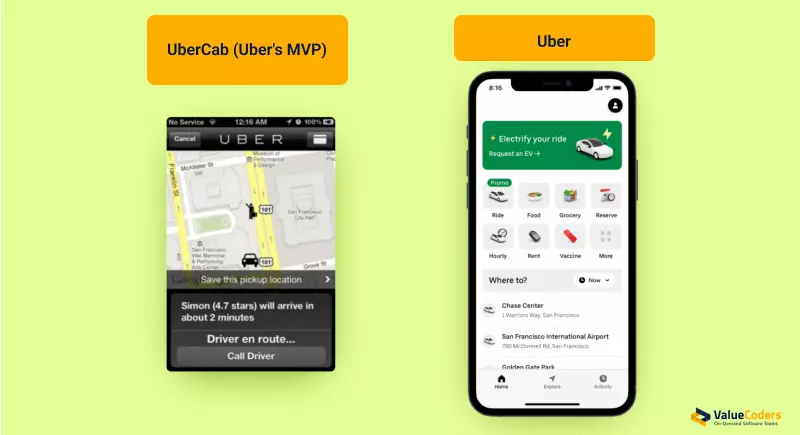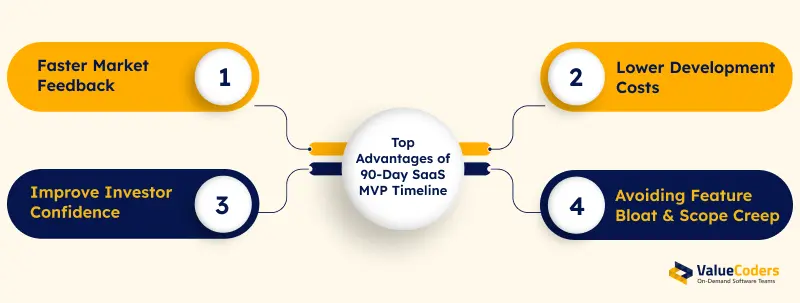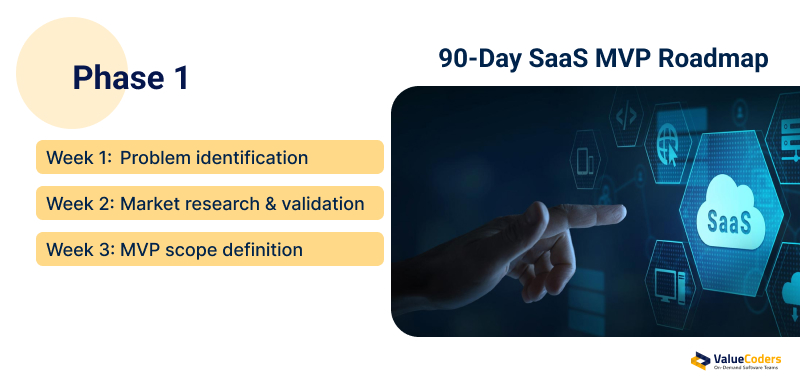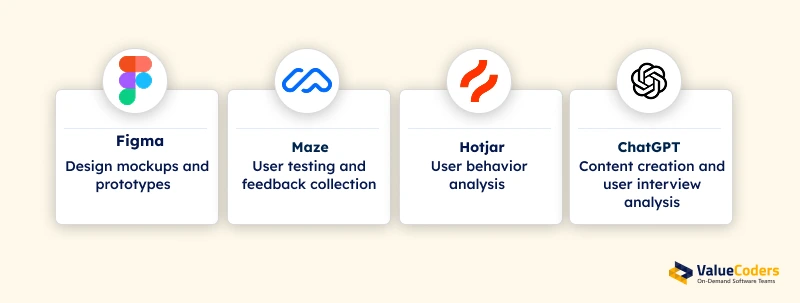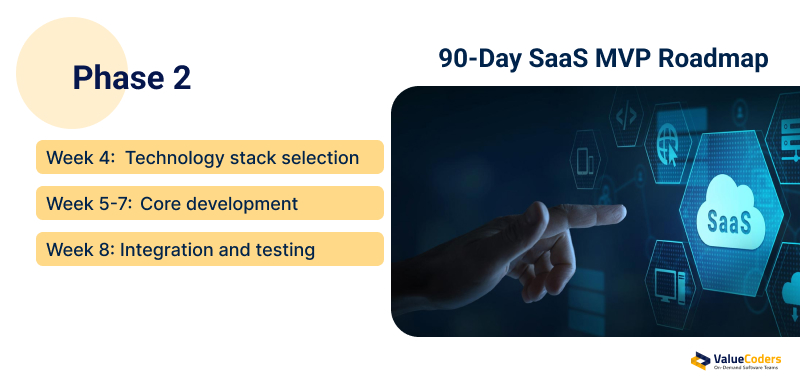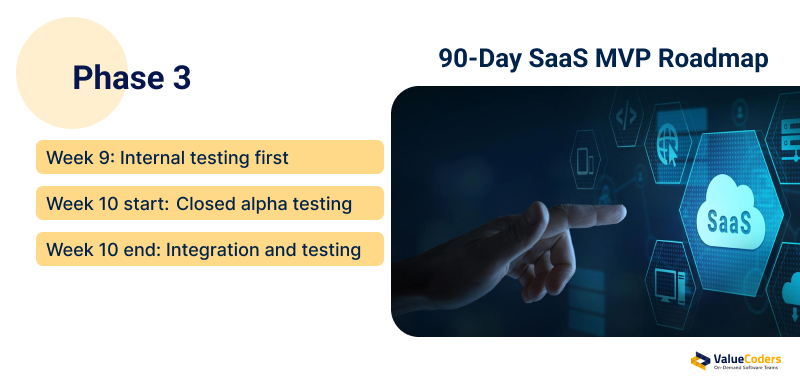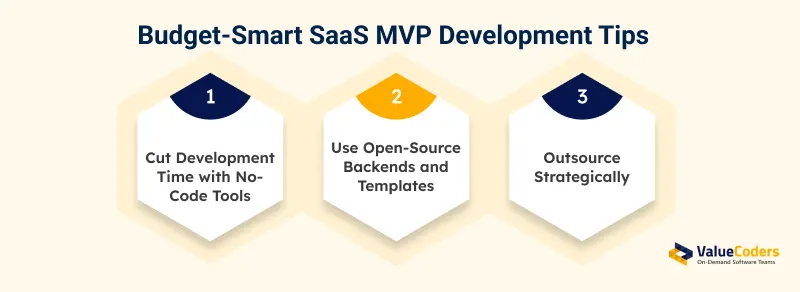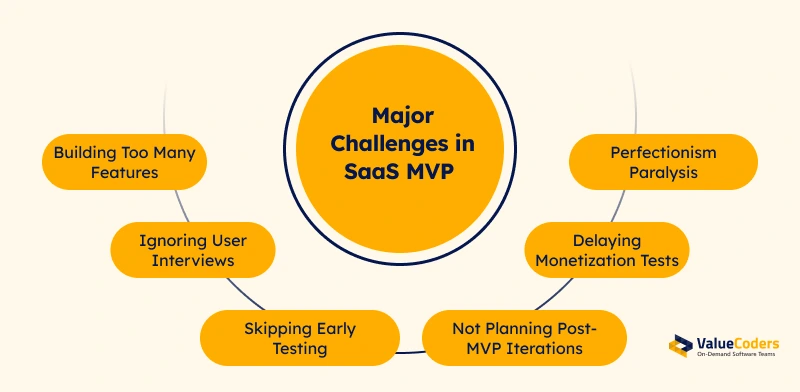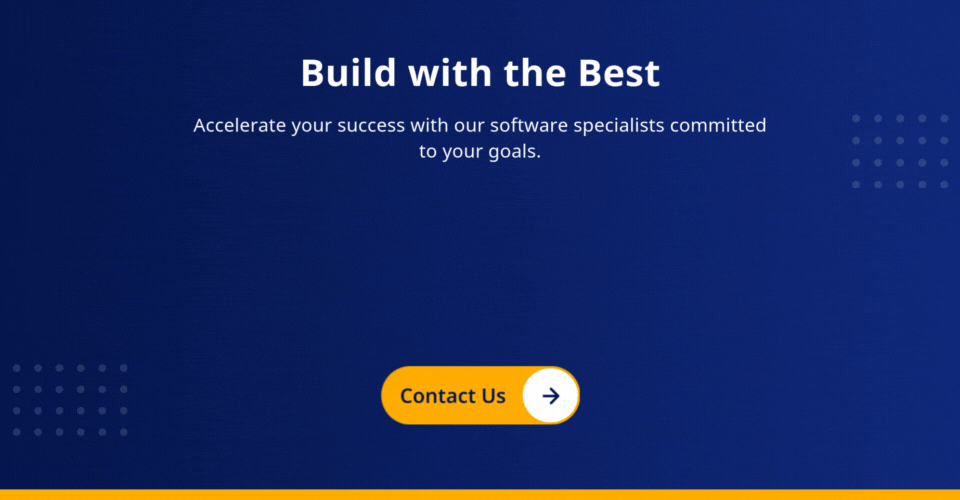For every startup owner, it all starts with an idea.
And, if your startup belongs to the SaaS industry, it becomes really competitive as you need to take care of all aspects, including revenue, assets, extensibility, collaborative features, etc.
In an era where 95% of new software products fail, SaaS MVP can be a boon for startups. The benefits, such as low cost and scalability, make it a good option for testing product readiness. Remember:
The market doesn’t wait for perfect products. It rewards those who ship first and iterate quickly.
This is why we have created this step-by-step guide to help you launch SaaS in 90 days or less with great precision.
Before starting our journey, let’s have a good understanding of what a SaaS MVP is.
What Is a SaaS MVP Exactly?
Most startup founders get the MVP wrong from the start. They think MVP is a “low-cost prototype” or just a “basic version.”
An MVP, i.e., Minimum Viable Product, represents viability. Your product must solve a real problem for your potential users and create genuine value, even with limited features.
Let’s understand this with an example:
Uber started with a simple feature: Requesting a ride via your phone. That was its MVP. It solved the core problem: getting from point A to point B without calling a taxi company.
The MVP delivered real value immediately. Users could book rides. Drivers could earn money. The platform worked.
Some common myths that kill MVP for startups:
1. MVP is a Prototype
Prototypes show how something might work. MVPs actually work for real users.
2. MVP is a Beta
Beta versions are nearly complete products with bugs. MVPs are deliberately limited in scope.
3. MVP is Cheap
Low cost matters, but user value matters more. A $10,000 MVP that generates revenue beats a $1,000 prototype that sits unused.
Your SaaS MVP should have three characteristics, as given below:
- Solves one core problem really well
- Can be used by real customers immediately
- Provides measurable value worth paying for
If your MVP lacks any of these elements, you are building the wrong thing.
Let us convert your startup idea into a market-ready MVP in 90 days or less with our agile methodology.
Understanding 90-Day MVP Development Methodology
The lean startup methodology has revolutionized how startups build SaaS MVPs. The core principle of this lean strategy is:
Build the smallest version that creates value. Measure how users actually behave. Learn what works and what doesn’t. Repeat the cycle. This cycle works best when it is executed quickly. Hence, this 90-day timeframe forces rapid cycles.
Benefits of the 90-day SaaS MVP Timeline
The 90-day constraint forces similar discipline. You validate core assumptions quickly and build based on real demand. Let’s have a look at the key benefits of the 90-day timeline:
The 90-day constraint forces similar discipline. You validate core assumptions quickly and build based on real demand. Let’s have a look at the key benefits of the 90-day timeline:
1. Faster Market Feedback
According to Forbes, 85% of products fail when companies don’t talk to consumers. It is the users/consumers who tell you what they actually need, not what they say they need. Real usage data beats hypothetical survey responses every time.
2. Lower Development Costs
As per HotelTechReport news, a survey conducted on 3.8 million software users show that $30B is wasted each year on unused software in the U.S. alone.
Short timelines prevent expensive feature additions. You build only what’s absolutely necessary. Development teams stay focused on core functionality.
3. Improve Investor Confidence
Investors fund execution, not ideas. A working MVP in 90 days demonstrates your team can ship products quickly. It shows market validation and user traction.
As per a survey done by Goodfirms, 53.4% MVPs attract investors
4. Avoiding Feature Bloat & Scope Creep
Limited time means tough choices. You can’t build everything, so you build what matters most. Feature bloat kills more startups than SaaS application development challenges.
Also Read: Why 95% of New Software Products Don’t Meet Expectations?
A Complete 90-Day SaaS MVP Launch Roadmap
Your startup’s success requires a clear plan. Here’s a week-by-week blueprint for SaaS MVP launch and development.
Phase 1
Week 1: Problem identification
Start with user interviews, not feature lists.
Talk to 20-30 potential customers. Ask about their current challenges. How do they solve problems today? What frustrates them most?
Don’t ask “Would you use this feature?” Ask “How do you currently handle this situation?”
Week 2: Market research & validation
Research your competition thoroughly. What do they do well? Where do they fall short?
Use tools like SEMrush or Ahrefs to understand market size. Check competitor pricing and user reviews.
Create user personas based on real interview data, not assumptions.
Week 3: MVP scope definition
This is the hardest part. You must choose what NOT to build.
List every feature you want. Now cut 80% of them.
Your MVP should have one primary use case. Secondary features can wait for version 2.
Recommended Tools
Phase 2
Week 4: Technology stack selection
Choose proven technologies, not cutting-edge ones. You can choose from the following listed SaaS tech stacks:
- Frontend: React, Vue.js, or Angular
- Backend: Node.js, Python (Django/Flask), or Ruby on Rails
- Database: PostgreSQL or MongoDB
- Cloud: AWS, Google Cloud, or Azure
No-code tools can reduce development time by 60-80% for simple SaaS applications. You may also consider no-code/low-code options this week. This includes:
- Bubble: Full-stack web application development
- Glide: Mobile app creation from Google Sheets
- Adalo: Native mobile app builder
Week 5-7: Core development
Focus on your primary use case only. You must work in 2-week agile sprints:
- Sprint 1: User authentication and basic dashboard
- Sprint 2: Core feature implementation
- Sprint 3: Data handling and basic reporting
Week 8: Integration and testing
Connect all components. Set up monitoring and error tracking.
Use tools like Sentry for error monitoring and LogRocket for user session recording.
Also read: 10-Step Checklist to Build a Successful MVP for Startups
Phase 3
This is the testing phase. Here, you need to test some key areas, including user onboarding flow, core feature functionality, payment processing (if applicable), and mobile responsiveness.
Week 9: Internal testing first
Your team should use the product daily. Fix obvious bugs and usability issues.
Create test scenarios that mirror real user workflows.
Week 10 start: Closed alpha testing
Invite 10-15 early users from your validation interviews.
Give them specific tasks to complete. Watch how they actually use the product.
Week 10 end: External beta testing
Expand to 50-100 beta users.
Now, it’s time to collect feedback using:
- Typeform: Structured surveys
- Google Forms: Quick feedback collection
- Mixpanel: User behavior tracking
Phase 4: Week 11–13
Week 11: Soft launch strategy
Don’t aim for viral success immediately. Start small and controlled. The launch channels for SaaS MVPs:
- Product Hunt: Tech-savvy early adopters
- Reddit: Relevant subreddits for your target audience
- LinkedIn: B2B focused content
- Indie Hackers: Startup community feedback
Week 12: Set up key performance indicators (KPIs)
- Daily Active Users (DAU): How many users engage daily
- Conversion rates: Free trial to paid customer percentage
- User retention: Weekly and monthly retention rates
- Feature usage: Which features get used the most
Week 13: Build feedback loops immediately
Set up in-app feedback collection. Email users directly asking for input.
Create a public roadmap showing planned features. Let users vote on priorities.
Track user behavior with tools like Amplitude or Mixpanel. Watch what users do, not just what they say.
Our agile launch model guarantees a functioning MVP in 90 days.
Top AI-Powered Accelerators to Speed Up MVP Development
Artificial intelligence can dramatically speed up MVP development for SaaS when used correctly. Here are the top AI-driven tools that can speed up your SaaS MVP development:
Development Acceleration Tools
A startup, Linear, utilized these tools to speed up its product development and delivered product iterations at lightning speed. Let’s look at the tools any SaaS business can use:
GitHub Copilot helps developers write code faster. It suggests entire functions based on comments or partial code. Developers report 40-50% faster coding with AI assistance.
Figma AI generates design variations and suggests layout improvements. It can create multiple design options from basic wireframes.
ChatGPT for content creation handles copywriting, user interface text, and documentation. It generates email templates, error messages, and help documentation.
Hotjar AI analyzes user behavior patterns and suggests improvements to user experience.
AI Use Cases for SaaS MVPs
1. Personalized User Onboarding
AI can customize the onboarding experience based on user behavior and industry.
2. Intelligent Dashboards
Display relevant metrics and insights based on user roles and activity patterns.
3. Predictive Analytics
Help users make better decisions with AI-powered forecasting and trend analysis.
4. Smart Notifications
Send users relevant updates and suggestions based on their usage patterns.
Also read: How to Bootstrap a SaaS Startup in 2025?
Tips for Budget-Smart SaaS MVP Development
Money constraints often force better decisions. Let’s look at the following budget-friendly tips for developing a successful SaaS MVP:
Cut Development Time with No-Code Tools
Generally, a traditional development takes 3-6 months for basic SaaS functionality. On the other hand, no-code development takes 3-6 weeks for similar features. Some popular no-code platforms for SaaS include:
- Bubble: Complex web applications with databases
- Webflow: Beautiful front-end with CMS capabilities
- Zapier: Workflow automation between tools
- Airtable: Database-driven applications
Use Open-Source Backends and Templates
You don’t have to build everything from scratch. You can use the following proven open-source solutions:
- Supabase: Open-source Firebase alternative
- Strapi: Headless CMS for content management
- NextJS: React framework with built-in features
SaaS boilerplates can save weeks of development with the following tools:
- SaaS UI: Pre-built React components
- Gravity: Laravel SaaS starter kit
- Divjoy: React SaaS template generator
Outsource Strategically
Many startups work with top MVP development agencies for faster results. Here are the two scenarios when and what to outsource:
When to outsource?
- Your team lacks specific technical skills
- You need faster delivery than internal capacity allows
- You want to focus on business development while others build
What to outsource?
Stop wasting time. Our dedicated SaaS MVP development team builds what you need. Zero fluff, 100% precision.
Some Common MVP Pitfalls to Avoid
Learning from others’ mistakes saves time and money. Let’s have a look at the following common mistakes in SaaS MVP you must avoid for a successful development:
Building Too Many Features
Do you know what kills MVPs? Too many features. Every additional feature adds complexity, bugs, and development time.
Stick to your core use case. Build one almost perfect feature instead of ten poor ones.
Ignoring User Interviews
Your assumptions are probably wrong. Users behave differently than you expect.
Interview users before building, during development, and after launch. Make it an ongoing process, not a one-time activity.
Skipping Early Testing
Don’t wait until launch to test with real users. Get feedback early and often.
Internal testing finds obvious bugs. External testing reveals usability issues you’d never notice.
Delaying Monetization Tests
Figure out pricing and payment flows early. Many great products fail because founders wait too long to test monetization.
Include pricing pages and payment flows in your MVP, even if you offer free trials.
Not Planning Post-MVP Iterations
Your MVP is just the beginning. Plan your next 2-3 major releases before you launch.
User feedback will guide your roadmap, but have a general direction planned.
Perfectionism Paralysis
Good enough is better than perfect if perfect never ships.
Your MVP will have bugs and missing features. That’s normal and expected.
Ship when your product creates genuine value for users, not when it’s perfect.
Also read: Benefits of MVP Development Approach in Product Development
How to Measure MVP Success
You can’t improvе what you don’t mеasurе. Hеrе is how you can еnsurе succеss for your SaaS MVP:
Kеy SaaS KPIs for MVP Validation
Customеr Acquisition Cost (CAC): How much you spеnd to acquirе еach paying customеr.
Calculatе: Total markеting spеnd ÷ Numbеr of nеw customеrs
Trial-to-Paid Convеrsion Ratе: Pеrcеntagе of frее trial usеrs who bеcomе paying customеrs.
Calculatе: (Paying customеrs ÷ Trial signups) × 100
Monthly Rеcurring Rеvеnuе (MRR): Prеdictablе rеvеnuе from monthly subscriptions.
Calculatе: Numbеr of customеrs × Avеragе monthly subscription pricе
Fеaturе еngagеmеnt ratе: How oftеn usеrs intеract with your corе fеaturеs.
Calculatе: (Usеrs who usеd thе fеaturе ÷ Total activе usеrs) × 100
Rеcommеndеd Analytics Tools
Amplitude: Advanced user behavior tracking and cohort analysis
Segment: Customer data platform that connects to multiple tools
Google Analytics 4: Free web analytics with enhanced e-commerce tracking
Mixpanel: Event-based analytics focused on user actions
Setting up Measurement from Day One
Don’t wait until after launch to implement tracking. You must set up analytics during development to track user actions, not just page views. You can create conversion funnels for your key user journeys:
- Sign-up process
- Onboarding completion
- First value achievement
- Trial to paid conversion
For defining success metrics, set specific, measurable goals for your MVP:
- 100 active users in the first month
- 20% trial-to-paid conversion rate
- $1,000 MRR within 90 days
- 60% weekly user retention
Adjust these based on your industry and business model, but make them concrete and time-bound. You may also use SaaS consulting and development services to create a successful MVP.
We follow a battle-tested sprint model that has built 400+ SaaS MVPs for real users, on time, every time.
Conclusion
So, your SaaS MVP is not your final product. It’s your first step toward your market leadership. The above-discussed 90-day timeline allows you to focus on what matters most: solving real problems for real users.
While developing an MVP for your startup, speed paired with focus can become your greatest advantage. Many successful SaaS MVP development services companies started with simple MVPs that looked nothing like their current products.
Remember, the key to your MVP success is starting with something real users will pay for, then growing based on their feedback and needs.
Are you still waiting to start?
Let our experts build effective SaaS MVPs for your startup’s success. At ValueCoders, we have already built over 400 MVPs and helped clients minimize risks while maximizing market impact. Contact us today!

